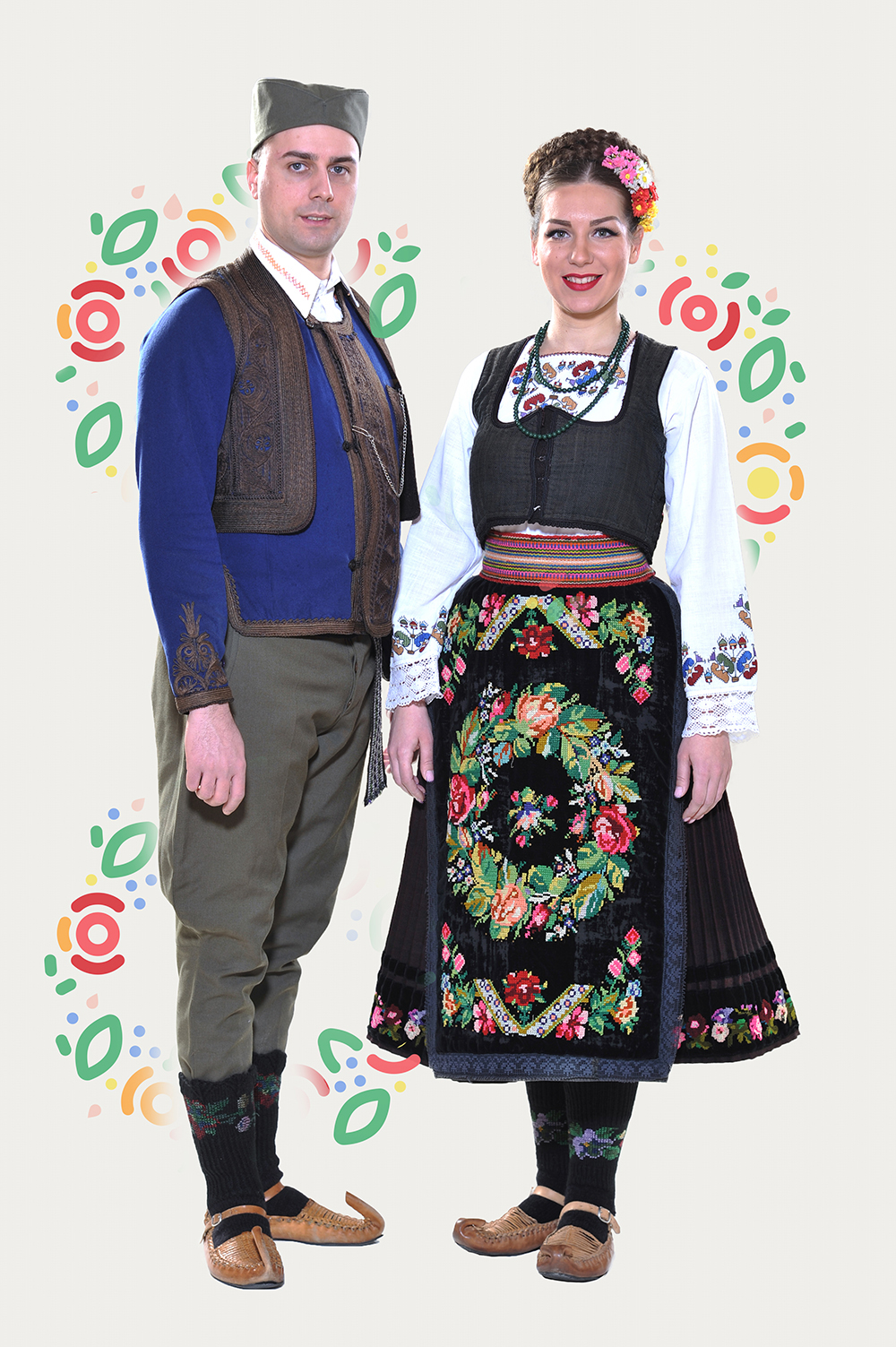


Jasenica
In different periods of time and various geographic locations, the name anteria was used for different types of upper gowns of male and female folk costumes. The most widespread one was a male gown of more recent folk costume originated from Šumadija. It was most often made of dark blue fabric, tightly tailored and up to the hips. It consists of back part, side pins, front line and special extensions for folds. Neckline is very deep, with no collar. It has long, very tight sleeves, widened at the bottom into "lampas"(cut tops of the sleeve). It is laid with thin, red cloth (later on with red cotton linen) visible on rolled sleeves and front coattails. On its hems, anteria is richly decorated with stylish herbal and geometric motives of silk ribbon. By the change of direction of setting the ribbon and with the trick of the light, various decorative effects were achieved. It was buttoned with silk loops which had one or two rows of small china buttons as an ornament. Loops and buttons are set on both sides so that anteria can be buttoned both from left to right and the other way round. It is cut on the hips and it is worn by boys and young people on holidays.
Read more


